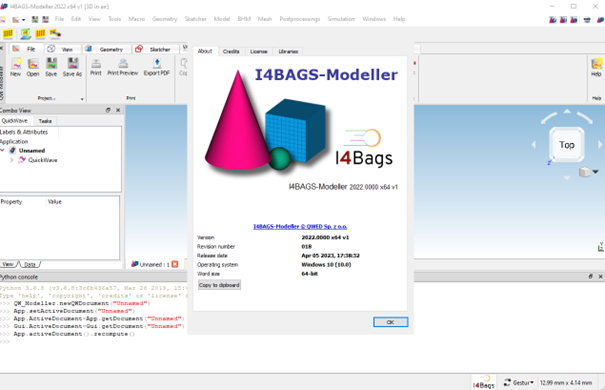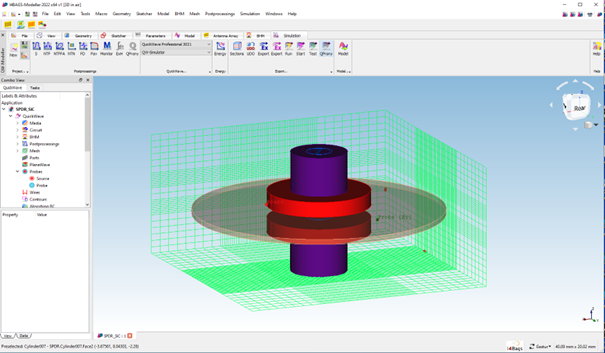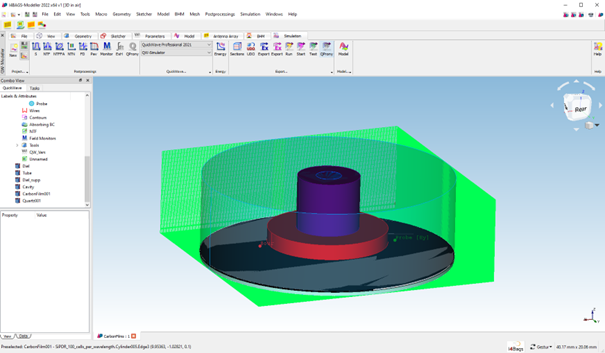
Ion Implantation for Innovative Interface modifications in BAttery and Graphene-enabled Systems
I4BAGS-Modeller
I4BAGS-Modeller
I4Bags-Modeller for QuickWave is tailored to seamlessly integrate with QuickWave software, offering a comprehensive solution for electromagnetic simulations. It empowers users to prepare extensive projects with ease and precision. Below, we'll explore the key features and functionalities of this powerful tool. It serves as a freely accessible CAD modeling tool finely tailored for seamless compatibility with QuickWave software. Users can harness its capabilities without encountering any constraints while preparing extensive projects for electromagnetic simulations using QuickWave.
Key Features
1. Axisymmetric 3D, 3DP, and V2D (BOR) Structural Designs: I4Bags-Modeller allows you to create complex structural designs, including axisymmetric 3D, 3DP, and V2D (BOR) models, which are essential for electromagnetic simulations.
2. Demo Version of QuickWave 2022 x64: The software includes a DEMO version of QuickWave 2022 x64, mirroring the functionality of the full version, and comes with predefined examples that facilitate your modeling tasks.
3. User-Friendly Interface: The I4Bags-Modeller Ribbon interface provides a streamlined experience, consolidating essential menus and commands to guide you through the project preparation process effortlessly.
4. V2D (BOR) Axisymmetrical Projects: This software extends its capabilities to allow users to create complete V2D (BOR) axisymmetrical projects within the QuickWave environment, enhancing electromagnetic design possibilities.
5. Basic Heating Module: For V2D (BOR) axisymmetrical projects, a Basic Heating Module is available, providing additional functionality for your simulations.
6. Parametrization and Optimization: I4Bags-Modeller excels in model parametrization, enabling you to define variables and utilize the Spreadsheet workbench for intricate formulae. This functionality empowers optimization and grid-search procedures, including the use of I4Bags-Optimiser Plus.
7. Two completely new examples based on typical tasks solved in the I4Bags project
To facilitate the use of I4Bags-Modeller and QuickWave in microwave courses, the software includes illustrative examples that delve into the fundamentals electromagnetic scenarios, accompanied by concise background explanations. These resources serve as invaluable introductory materials for comprehending key principles in microwave engineering. Below is a view of the installed application.
Key Features
1. Axisymmetric 3D, 3DP, and V2D (BOR) Structural Designs: I4Bags-Modeller allows you to create complex structural designs, including axisymmetric 3D, 3DP, and V2D (BOR) models, which are essential for electromagnetic simulations.
2. Demo Version of QuickWave 2022 x64: The software includes a DEMO version of QuickWave 2022 x64, mirroring the functionality of the full version, and comes with predefined examples that facilitate your modeling tasks.
3. User-Friendly Interface: The I4Bags-Modeller Ribbon interface provides a streamlined experience, consolidating essential menus and commands to guide you through the project preparation process effortlessly.
4. V2D (BOR) Axisymmetrical Projects: This software extends its capabilities to allow users to create complete V2D (BOR) axisymmetrical projects within the QuickWave environment, enhancing electromagnetic design possibilities.
5. Basic Heating Module: For V2D (BOR) axisymmetrical projects, a Basic Heating Module is available, providing additional functionality for your simulations.
6. Parametrization and Optimization: I4Bags-Modeller excels in model parametrization, enabling you to define variables and utilize the Spreadsheet workbench for intricate formulae. This functionality empowers optimization and grid-search procedures, including the use of I4Bags-Optimiser Plus.
7. Two completely new examples based on typical tasks solved in the I4Bags project
To facilitate the use of I4Bags-Modeller and QuickWave in microwave courses, the software includes illustrative examples that delve into the fundamentals electromagnetic scenarios, accompanied by concise background explanations. These resources serve as invaluable introductory materials for comprehending key principles in microwave engineering. Below is a view of the installed application.



